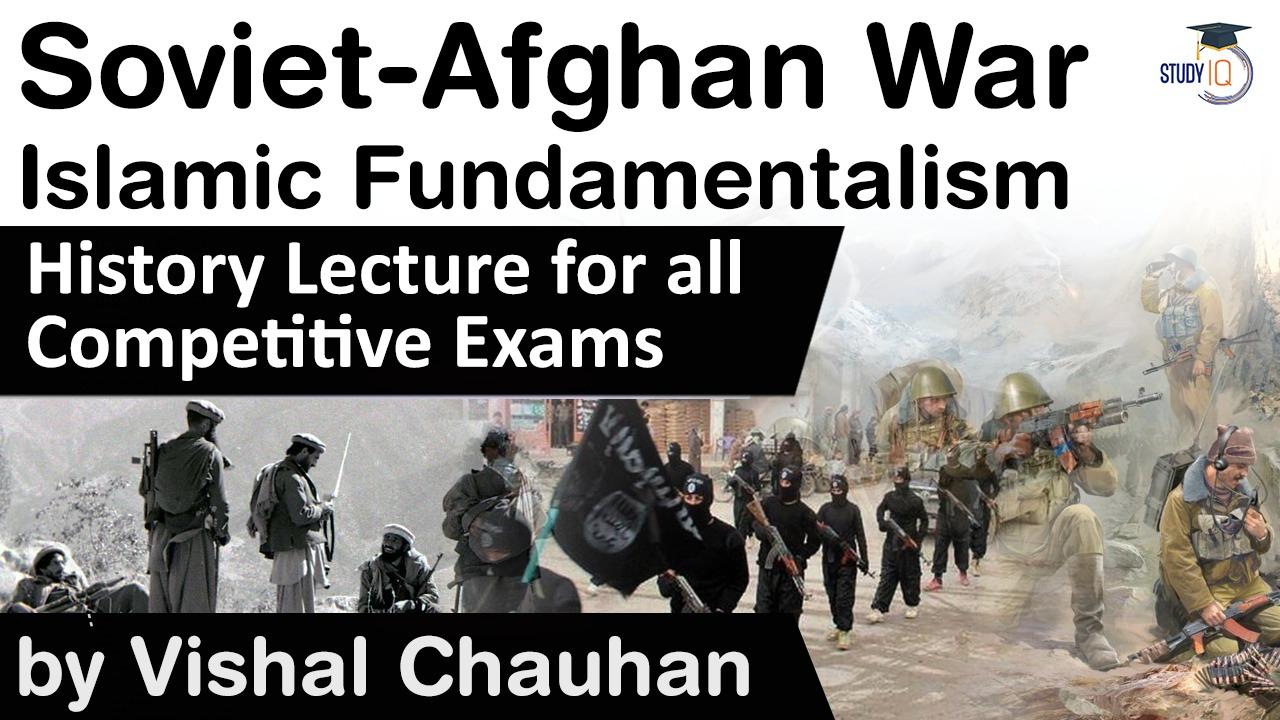Table of Contents
Soviet Invasion of Afghanistan:
- At the end of December 1979, The Soviet Union sent thousands of troops into Afghanistan and immediately assumed complete military and political control of Kabul and large portions of the country.
- This event began a brutal, decade long attempt by Moscow to subdue the Afghan civil war and maintain a friendly and socialist government on its border.
- It was a watershed event of the Cold War, marking the only time the Soviet Union invaded a country outside the eastern bloc- a strategic decision met by nearly world-wide condemnation.
- Afghanistan had been witnessing political strife since more than five years marked by a series of coups and executions of political opponents, mainly the Islamists and the communists to grab political power.
- However, in the summer of 1978, Hafizullah Amin, the Deputy Prime Minister, received word that Babrak Karmal was leading a plot to overthrow the communist supported Nur Mohammed Taraki regime.
- Amin took the opportunity to purge and execute many of those who were suspected of the plot and consolidate his own power.
- Complicating matters further, this internal strife damaged the Kabul government’s major national program, namely, to bring the communist revolution in their Islamic tribal areas beyond Kabul.
- By the winter of 1978, this program was met by armed revolt throughout the country.
- In response, Amin and Taraki travelled to Moscow to sign a friendship treaty which included a provision that would allow direct Soviet military assistance should the Islamic insurgency threaten the regime.
- This insurrection intensified over the next year and became increasingly obvious to the Soviets that Taraki could not prevent all out civil war and the prospect of hostile Islamic government taking control.
- By mid-1979 Moscow was searching to replace the Taraki and Amin, and dispatched combat troops to Bagram air base outside of Kabul.
- This move prompted the Carter administration to begin supplying nonlethal aid to Afghan mujahedeen, or Islamic insurgents.
- In August, high ranking Soviet military delegation arrived in Kabul to assess the situation.
- US officials interpreted this mission as one last Soviet attempt to shore up the Taraki regime, and also an opportunity device for military takeover.
- But this calculus was bound to change.
- Amin sensed the Soviet mission was designed to strengthen Taraki at his expense.
- In response, forces loyal to Amin executed Taraki in October- a move that infuriated Moscow, which began amassing combat units along its border.
- By the winter of 1979, faced with mutinies and an uncertain leadership, The Afghan army was unable to provide basic security to the government against the onslaught of Islamic fighters nearing Kabul.
- By that point the Soviets were sending in motorized divisions and special forces.
- Finally, on Christmas Eve, the invasion began, Soviet troops killed Amin and installed Barack Karmal as the Soviet puppet head of government.
- In response the Carter administration responded by vowing to protect Middle Eastern oil supplies in view of the Soviet threat and stepped up its aid to the Afghan mujahedeen.
- In sum, these actions were Washington’s collective attempt to make the Soviets’ “adventure” in Afghanistan as painful and brief as possible.
- Instead, it took 10 years of grinding insurgency before Moscow finally withdrew, at the cost of millions of lives and billions of dollars.
- In their wake, The Soviets left a shattered country in which the Taliban, an Islamic fundamentalist group, seized control, later providing Osama bin Laden with the training base from which to launch terrorist operations worldwide.






Rise of Islamic Fundamentalism:
- In the attempt to curtail the Soviets in Afghanistan, The US started adding the Afghan mujahedeen who are the fundamentalist faction.
- The invasion of Afghanistan by the Soviets which was primarily a Muslim country was not acceptable to the Islamists.
- Islamists have their own concept of politics and governance, which was quite different from the capitalists or the Socialists.
- Bin laden, for example who is considered the epitome of Islamic fundamentalism, regarded all the other faiths, including the Jews and Christians along with the Socialists as their adversaries.
- They interpreted the Muslim religious text to draw principle of politics and governance and believe that society and the state should be governed on the lines of Islamic texts.
- Afghan mujahadeen were a fundamentalist group which was constituted to protect the Muslim population of Afghanistan from the Atheist Communists.
- Aided and supported by the US, they embarked upon guerilla warfare and ensured that the Soviet forces were constantly engaged in neutralization operations.
- The civil war, which the mujahadeen fought against the Soviets in Afghanistan embolden their ambitions and they started believing that guerrilla operations and terrorist strike operations could be used in other parts of the world as well to fight colonial forces of capitalism led by the Jews and the Christians and the communist forces led by the Soviets.
- Therefore, once the Soviets left Afghanistan and the country was seized by the Taliban, these radical elements got a safe haven to establish their base and conduct their operations within Afghanistan as well as elsewhere in the world.
- Thus, in the late 1980s, we witnessed the rise of militancy in the Kashmir Valley which was mainly driven by using the radical Islamist to conduct terrorist operations and put pressure on the Indian government to accede to their demands.
- This pattern of using terrorist operations for putting pressure on the governments to accede to their demands was widely used in the 1990s as well as 2000s, however, it reaped very little success when they were pitted against stronger nations like US, Russia or Moscow, but worked well with with some smaller and weaker countries wherein the Islamist using their terror tactics either became a strong political force and seized political power or able to get the protection of the state itself.
- Nevertheless, the rise of Islamic fundamentalism and religious extremism become a major development in the latter part of the 20th century against which the entire global community had to devise new methods and strategies.
























 WhatsApp
WhatsApp